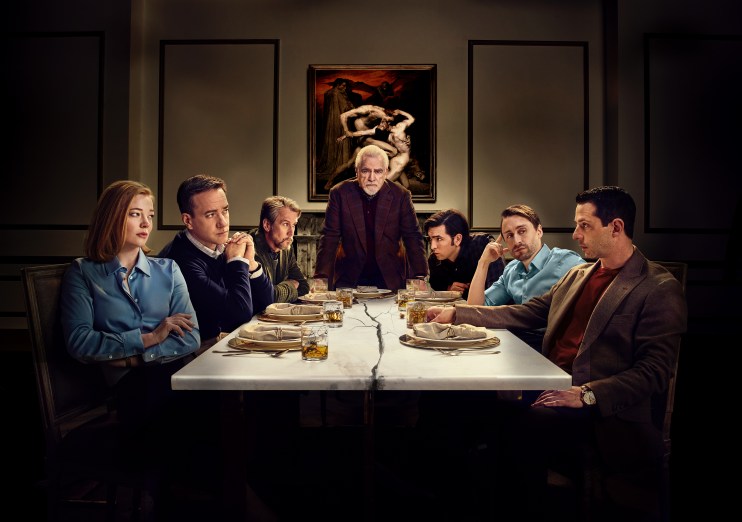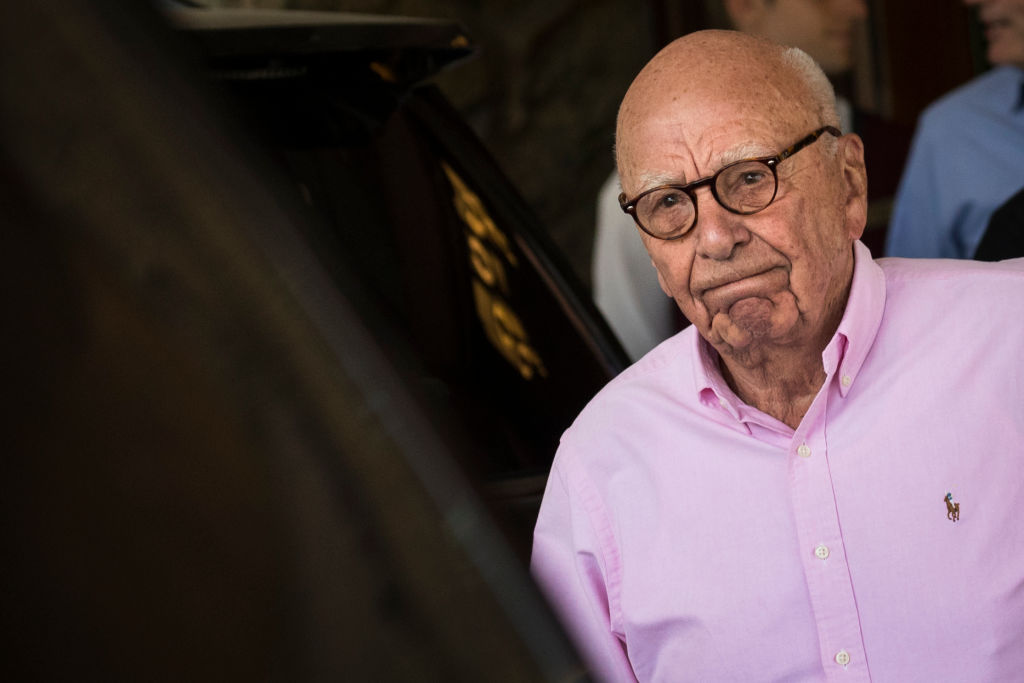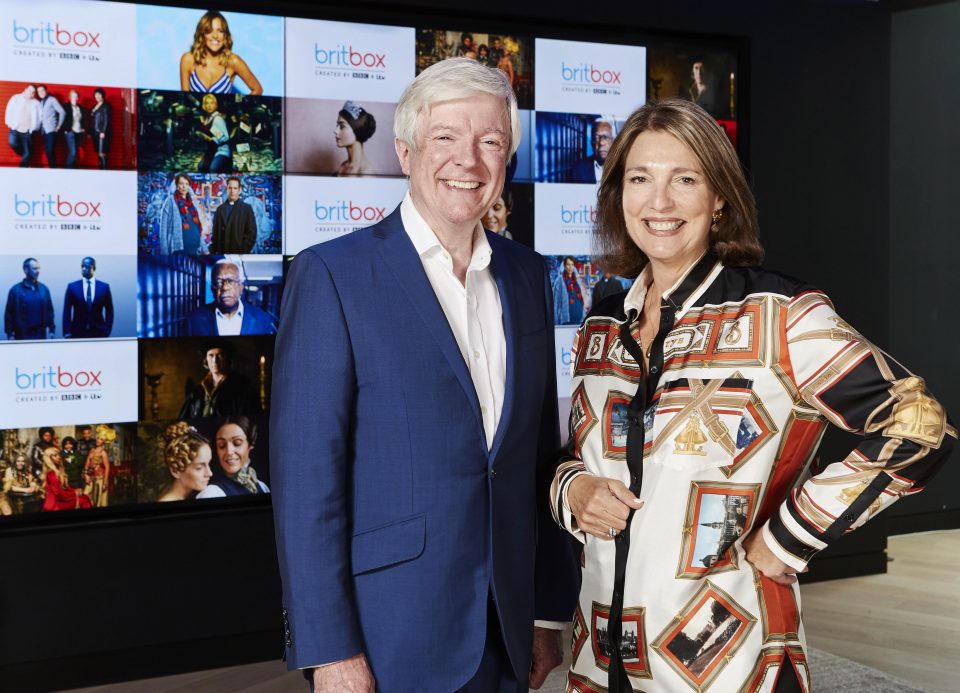Better together: How media firms are teaming up to take on tech

The media industry is in flux and embattled publishers and broadcasters are banding together. But will it be enough to fend off the might of big tech?
In Succession, the hit HBO show about a crumbling media dynasty, virtually every conversation is a power struggle. But for ageing patriarch Logan Roy, a thinly-veiled Rupert Murdoch, the best way to seize more control and shore up his position in a cut-throat market is a big-ticket merger.
The real Murdoch has been plotting similar moves. Shortly after the media mogul sold 21st Century Fox to Disney for an eye-watering $71bn, he secured permission to merge parts of the Times and the Sunday Times.
But while the melodrama of Murdoch and his fictional facsimiles capture the imagination, the media industry is also undergoing a less glamorous series of changes. As Silicon Valley tech giants flex their muscles ever further in the sector, once-fierce rivals are increasingly working together in a defiant effort to hold their ground.
Read more: Advertisers need to get in on the streaming revolution
Burying the hatchet
Given news publishers spent decades building up healthy rivalries, it’s unsurprising that a detente has been years in the offing. After a stuttering start, publishers News UK, the Guardian, the Telegraph and Reach have now formed an alliance.
The coalition, dubbed the Ozone Project, launched last year with the aim of pooling the publishers’ digital advertising space.
“The Ozone Project allows publishers to take greater control by helping to close the gap between advertisers and their business, creating a more direct, trusted and valuable relationship within the digital advertising space,” explains chief executive Damon Reeve.
In addition to granting publishers strength through scale, Reeve says, the system also creates a high-quality advertising environment for brands – an antidote to the horror stories of adverts appearing alongside terrorist propaganda, hate speech or other unsavoury content.
The Ozone Project is steadily growing its roster of publishers, last month signing up Stylist and titles from its parent company DC Thomson. In the US, meanwhile, Buzzfeed has teamed up with rivals Group Nine Media and Insider to sell video ad space across all three companies’ websites, apps and Youtube channels.
Richard Reeves, managing director of the Association for Online Publishing, says the moves are inevitable in the face of a “common threat”.
“Whilst they keep their independent personality and voice, they recognise that with some of the challenges they’re so much better if they become this irresistible force.”
But it isn’t only publishers that are feeling the strain, and the public service broadcasters – the BBC, ITV, Channel 4 and Channel 5 – are also teaming up.

Sky has recently signed deals to collaborate with both Channel 4 and the BBC over its Adsmart technology, allowing the companies to deliver targeted ads.
Then there is Britbox, the joint streaming service launched earlier this month by the UK’s public service broadcasters with a promise to offer customers the best of British programming.
Gill Hind, chief operating officer and director of TV at Enders Analysis, says that while there has always been some collaboration between broadcasters, the approach is “absolutely vital” going forwards.
Gradually, it seems, traditional media companies are recognising the need to bury the hatchet and collaborate. And yet the moves are couched in a nagging doubt – is it too little, too late?
An industry in crisis
To say that the relationship between the BBC and media regulator Ofcom was strained would likely be an understatement.
“The BBC has never been knowingly under-regulated,” BBC chairman Sir David Clementi quipped recently in reference to the watchdog’s outgoing boss, Sharon White, ahead of her move to John Lewis.
Tension reached fresh highs last month when Ofcom published a damning report concluding that the corporation “may not be sustainable” in its current form.
The reach of the BBC’s TV channels among 16 to 24-year-olds has fallen below 50 per cent for the first time, and Ofcom warned the broadcaster was at risk of losing an entire generation of licence viewers.
Similar soul-searching has been going on at ITV. City A.M. understands that chairman Sir Peter Bazalgette has held crunch meetings with top executives amid fears the broadcaster is facing the same existential threat as the BBC.

As viewing habits shift inexorably towards on-demand streaming, US tech giants such as Netflix and Amazon Prime are taking an ever-growing share of viewing hours. With offerings from Disney and Apple now also in the mix, the threat is only increasing.
For publishers, too, it is not yet clear whether collaboration will be enough to fight off the might of Silicon Valley.
For Ozone’s Reeve, publishers are at the mercy of a fundamental imbalance in the digital advertising market that stacked the odds in favour of tech giants. This view is shared by a string of media firms, including the Daily Mail’s parent company, which has argued that Google and Facebook are using their dominant position to stifle competition in the digital advertising market.
The government’s Cairncross Review, published earlier this year, set out similar concerns, and the Competition and Markets Authority has since opened a probe into the UK’s digital ad market.
Whether or not the tech giants’ behaviour is deemed anti-competitive remains to be seen, but the figures are certainly alarming. The so-called duopoly has steadily grown its market share, and is expected to take roughly 65 per cent of all digital ad spend in the UK by 2021.
Read more: UK households to splash out an extra £600m on streaming
Is content still king?
It’s been almost 25 years since Bill Gates declared that content is king. While the principle still holds true, the current state of the sector means the picture may not be so straightforward for traditional media companies.
Although the BBC continues to produce hugely popular programming – Killing Eve and Bodyguard are the stand-out recent examples – it simply cannot compete with the deep pockets of its Silicon Valley rivals. Even Sky’s production budget, which has doubled to £1bn, pales in comparison to the estimated $15bn splashed out by Netflix this year.
ITV boss Carolyn McColl has acknowledged this disparity, and made it clear that Britbox is not intended as a rival to Netflix.

So if a battle purely over production is out of the question, for traditional broadcasters the challenge is ensuring that its existing output reaches audiences.
Ofcom rules have long ensured that channels from the UK’s public service broadcasters appear high up in programme guides, but the rise in online viewing has raised concerns that PSB shows are getting lost in a sea of content. In July, the watchdog set out a number of recommendations for the government to ensure that PSBs were given prominence on smart TVs and devices.
For the BBC, progress has already been made. The Sky deal means iPlayer will now be fully integrated into the pay-TV firm’s platform and, after almost a year of deliberating by Ofcom, the broadcaster can now hold its shows on iPlayer for a year, rather than 30 days.
David Elms, head of media at KPMG, says that as more and more programming floods the online space, the key for traditional media businesses will be to maintain their strong branding.
“Future business models will be increasingly driven by the quality of the programmes and the ease with which viewers can access them,” he says. “As long as they continue to be associated with engaging headline content, they’ll continue to be a destination.”
For digital publishers, however, being a destination may not be enough. As advertising dollars are diverted to the tech giants, one of the keys to survival is diversification.
One example of this is Marie Claire. Having closed its UK print edition after more than 30 years, the women’s monthly is now shifting its attention to fashion aggregator platform Marie Claire Edit and Fabled, a joint venture with Ocado snapped up by retailer Next earlier this year.
Time Out, once a print stalwart, has also refocused its efforts. While digital advertising remains its main source of revenue, the firm’s key driver of growth is its popular food markets, two of which are set to open in London in the coming years.
Of course, not everyone is struggling. Through an aggressive growth strategy and a focus on niche audiences, Future (which recently bought Marie Claire publisher TI Media), has bucked the downward trend. But overall, publishers are being shunned ever more from advertising – their traditional source of income – and short of regulatory intervention, they must adapt to survive.
In Succession, the Roy children are engaged in a permanent power struggle, and yet they very rarely acknowledge the external pressures. Shielded from the outside world by their wealth, the scions seem to pay little attention to the fundamental shift that is chipping away at the power of their traditional empire.
In the real world, the sector cannot afford to be so complacent. As the boundaries between tech and media continue to blur, and with the odds tilted heavily in favour of Silicon Valley, media companies are now fighting to reestablish their own worth.
Main image credit: Sky